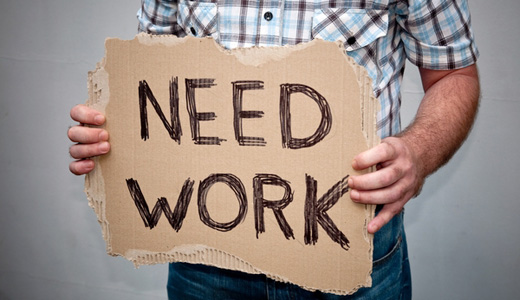
WASHINGTON (PAI) – The U.S. unemployment rate stayed unchanged in July at 4.9 percent, the Bureau of Labor Statistics said, even as a separate BLS survey showed firms claimed to create a net of 217,000 new jobs that month. Governments added another 38,000.
The number of jobless declined by 13,000, to 7.77 million, BLS said, but 420,000 more people joined the ranks of the employed, it added.
The pro-worker Economic Policy Institute added a “Yes, but…” comment to the numbers. Given the number of jobless, of discouraged workers who are jobless but looking and of those who have dropped out of the workforce entirely, “There are 2.3 million people who would be working or looking for work if the economy were stronger,” EPI said. And official joblessness would be 6.2 percent, not 4.9 percent, EPI added.
The BLS data back that up. Together, the discouraged workers, those who dropped out and those toiling part-time when they really want full-time jobs made up one of every 10 workers (9.7 percent) in July, BLS reported. That’s virtually unchanged since March.
As usual, employers in high-paying industries – such as factories and construction – said they added few jobs in July, while those in low-paying sectors – such as health care – added tens of thousands.
Factories claimed to add 9,000 jobs in July, rising to 12.305 million, with 6,700 of the new jobs in car and car part plants. Other factories showed small gains or losses. For example, primary metal firms claimed to add 300 jobs and fabricated metal plants lost 1,800. Construction firms claimed to add 14,000 new jobs in July, increasing to 6.652 million. Most of the new jobs (8,900) were at specialty trade contractors.
There were 669,000 jobless factory workers (4.3 percent) and 410,000 unemployed construction workers (4.5 percent) in July. But construction union leaders say that figure understates joblessness in their sector, since if a worker toils for one day during the survey week at the beginning of last month, he or she is counted as employed for the whole month.
Service firms claimed to create 201,000 new jobs in July, with low-paying sectors leading the way: Retail trade (+14,700 jobs, to 14.96 million), temps (+17,000 to 2.93 million), health care (+43,200, to 15.58 million) and bars and restaurants (+21,300 to 11.35 million). Trucking firms added 1,700 jobs, to 1.456 million, and mass transit added 4,400 jobs to 477,600. But air, rail and water transportation firms combined shed 600 jobs, to 748,200.
Schools accounted for the government job jump (+38,000), seasonally adjusted. Local schools added 21,600 jobs, rising to 7.85 million and state colleges and universities added another 5,100, to 2.453 million. Local governments also added 8,700 workers, to 6.41 million.
EPI noted state and local governments never hired back all the workers they fired in the Great Recession, also known as the Bush Crash, and there’s been a resulting drag on the current recovery. “If it weren’t for those cuts, the economy would have fully recovered by now,” EPI economist Robert Scott said.
Photo: Lethbridge Transit (CC)
Line numbers
Insert Cancel












Comments